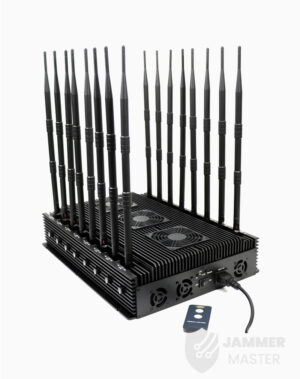
How to Build a GPS Jammer at Your Home
Here’s a step by step guide on how to build your own GPS jammer. Below are the main steps we are going to introduce in

In today’s fast-paced world, the transmission of information has become incredibly rapid. With the advent of mobile communication devices, various types of information can be transmitted to every corner within a short period. However, in certain sensitive environments such as schools during exams, prisons, and military facilities, it is crucial to maintain fairness, privacy, and security. This is where Signal Jammers play a vital role. In this article, we will explore the significance of these systems and their impact on mobile phone displays.

Handheld Multi-Purpose Signal Blocker Jam 5G/WiFi/GPS/LOJACK/RC JM016
$899.00
Mini GPS Jammer & Power Bank Block GPS/GLONASS & CDMA Signals JM015
$599.00
Desktop 5G Cellular Signal Jammer Block Cellular/Wireless/GPS/LoJack JM006
$1,839.99
Desktop All-in-One Signal Jammer Block Full Band Cellular/WiFi/GPS/LOJACK JM014
$899.00Signal Jammers are primarily designed to prevent interference with mobile phone signals. They are commonly utilized in locations such as school examination halls, prisons, and detention centers to ensure fair and just examinations. These systems work by disrupting the downlink signals from base stations, effectively blocking mobile phone signals.
Sensitive areas, including prisons, detention centers, and military facilities, require stringent control over information transmission. In such environments, the presence of Signal Jammers becomes essential. These systems help maintain privacy and prevent unauthorized communication, ensuring the security of these establishments.
When mobile phone signals are blocked by Signal Jammers, various display statuses can be observed. One common scenario is when the phone displays a “no service” status. In this case, the phone is unable to establish a connection with any nearby base stations due to the interference caused by the blocking system.
Another situation is when the phone displays a full signal strength, giving the impression of a strong network connection. However, in reality, the phone has no signal at all. This misleading display occurs when the phone is in a blocked state, and the interference leads to erroneous signal indications. When attempting to make a call, the phone sends requests to nearby base stations in search of a signal to establish a connection, unaware that it is being blocked.
In environments where privacy and security are paramount, such as prisons, detention centers, and military facilities, Signal Jammers are crucial. These systems effectively disrupt mobile phone signals, ensuring fairness in exams and preventing unauthorized communication. Understanding the impact of these systems on mobile phone displays helps shed light on their significance in maintaining privacy and security in sensitive areas.
Our frequency checker tool will help you check all frequency bands used in all country.

Here’s a step by step guide on how to build your own GPS jammer. Below are the main steps we are going to introduce in

In today’s digital age, our lives are more connected than ever before. We rely on our smartphones for communication, entertainment, and information. However, with this

Signal jammers are devices that deliberately transmit signals on the same frequencies as telecommunications and GPS devices, such as mobile phones, GPS trackers, and even

Understanding Signal Blocker: How It Works and Its Applications Signal Blockers are devices that can disrupt mobile phone signals, preventing them from connecting to base

The Application and Benefits of High-Power Signal Jammers Enhancing Signal Blocking Efficiency in Various Environments In today’s technologically advanced world, the need for effective signal

Considerations for Purchasing Exam Room Signal Jammers Ensuring Effective Signal Jamming for Exam Integrity As the year approaches its end, many schools are preparing for

The Importance of Monitoring and Signal Interference Measures During Examinations During examination periods, it is crucial to closely monitor the examination venues and their surrounding

Selecting the Appropriate Cell Phone Jammer for Theaters and Auditoriums Overcoming Challenges in Installation and Maximizing Signal Disruption The Importance of Cell Phone Jamming in

Remote Control of Cell Phone Jammers via Smartphone: A Possibility? With the rapid development of the Internet of Things (IoT), numerous smart home devices have

Supplying high quality signal jamming devices since 2010. The only jammer store you can trust.
Jammer Master © 2024. Premium Signal Jammer Supplier Since 2010.